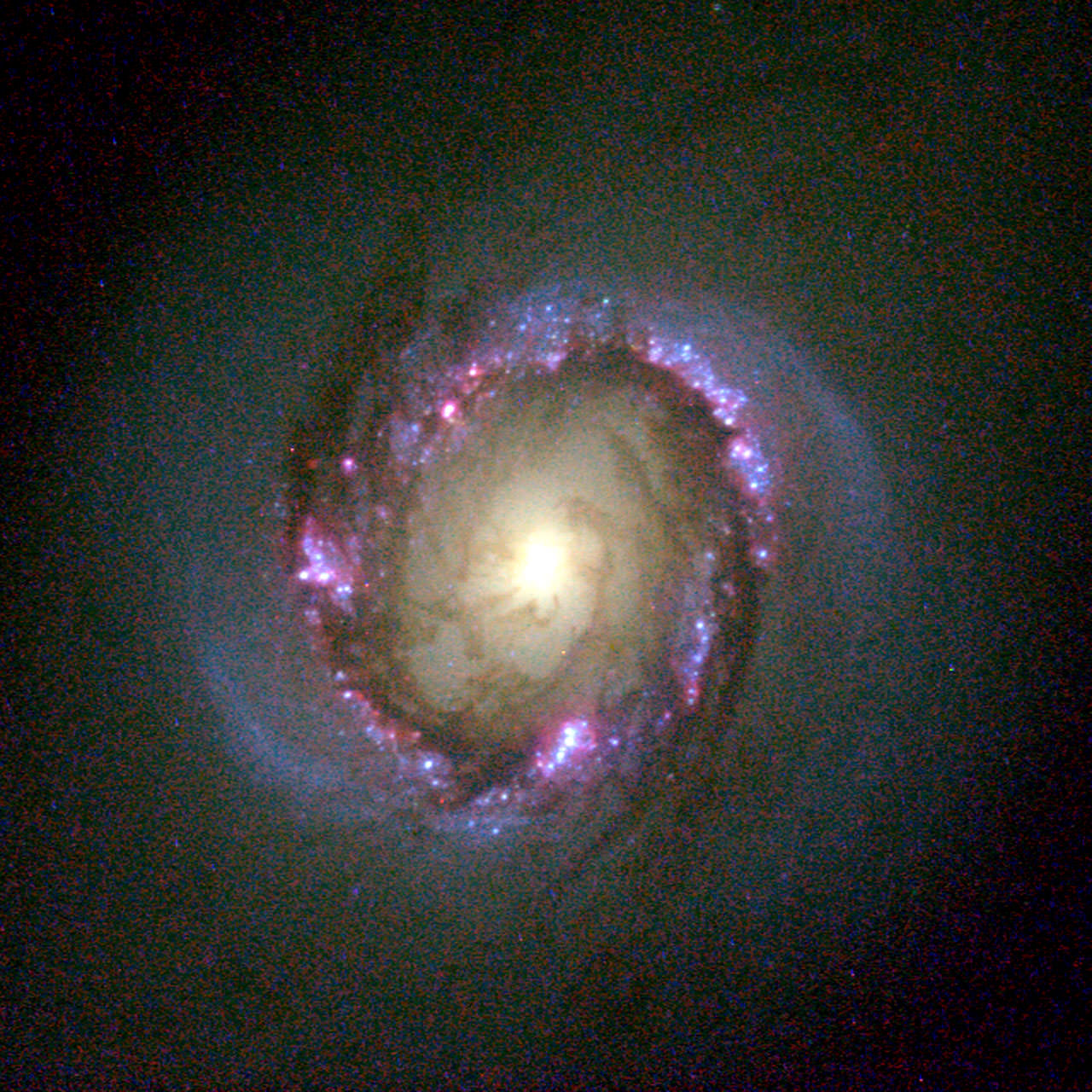[/caption]
A typical spiral galaxy is shaped like a flat spinning disk – think of a record. It has a bulging galactic core surrounded by a flat rotating disk of stars. For example, our own Milky Way measures about 100,000 light-years across. Our Sun is thought to be about 25,000 light-years away from the galaxy core.
Studying the galaxy core is very difficult for astronomers. That’s because the regions surrounding the central core are shrouded in thick gas and dust that blocks visible light. In order to study the center of the galaxy, astronomers used to have to look at other galaxies that were similar in structure to the Milky Way. But in the last few decades, astronomers have been finally able to study the galaxy core in other wavelengths, like infrared and x-rays, which can pass through gas and dust.
And what they found surprised them.
Researchers discovered that the stars at the galactic core are orbiting an object with an enormous amount of mass. That object turned out to be a supermassive black hole, with 4.1 million times the mass of the Sun. Since that discovery, astronomers have located supermassive black holes in the galactic cores of many galaxies, and theorized that they’re in all galaxies.
Active galaxies, known as quasars (as well as other names), occur when the supermassive black hole is actively feeding on infalling material. This material heats up to millions of degrees and blazes with more radiation than all of the stars in the galaxy. And then when the supermassive black hole at the galaxy core runs out of fuel, it goes quiet again.
Within a parsec of the galactic core, there are thousands of stars. Most of these are old main sequence stars, there are many massive stars too. In fact, more than 100 of the brightest, hottest types of stars have been discovered around the galaxy core. Astronomers used to think that massive tidal forces from the supermassive black hole at the center of the galaxy would prevent their formation, but there they are.
We have written many articles about galaxies for Universe Today. Here’s an article about how a collision between galaxies creates a dark matter core.
If you’d like more info on galaxies, check out Hubblesite’s News Releases on Galaxies, and here’s NASA’s Science Page on Galaxies.
We have also recorded an episode of Astronomy Cast about galaxies – Episode 97: Galaxies.
Sources: SEDS, UCLA Galactic Center Group, NASA

